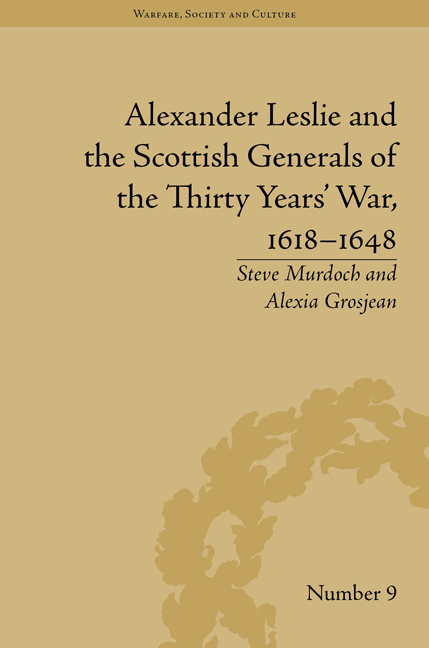Book contents
- Frontmatter
- CONTENTS
- Dedication
- Acknowledgements
- Abbreviations
- Stylistic Conventions
- Introduction
- 1 Scotland's Indigenous Military Cultures
- 2 The Scottish Military Diaspora
- 3 The Thirty Years' War Campaigns: Stralsund to Prague, 1628–35
- 4 Alexander Leslie and the Army of the Weser, 1635–9
- 5 The Home Front: Leslie, Ruthven and the Bishops' Wars, 1638–41
- 6 The Scottish ‘Veteran Generals’ in England, 1642–7
- 7 Going Full Circle: The New Scottish Command in Europe, 1639–48
- Conclusion
- Appendix
- Notes
- Works Cited
- Index
7 - Going Full Circle: The New Scottish Command in Europe, 1639–48
- Frontmatter
- CONTENTS
- Dedication
- Acknowledgements
- Abbreviations
- Stylistic Conventions
- Introduction
- 1 Scotland's Indigenous Military Cultures
- 2 The Scottish Military Diaspora
- 3 The Thirty Years' War Campaigns: Stralsund to Prague, 1628–35
- 4 Alexander Leslie and the Army of the Weser, 1635–9
- 5 The Home Front: Leslie, Ruthven and the Bishops' Wars, 1638–41
- 6 The Scottish ‘Veteran Generals’ in England, 1642–7
- 7 Going Full Circle: The New Scottish Command in Europe, 1639–48
- Conclusion
- Appendix
- Notes
- Works Cited
- Index
Summary
Honourable Brother,
I recaved your letter, whereby I perceive you were pleased to make mention of me to the Queen's Majestie for the which I returne you many thanks; And as to the Leveying of Soldiers for the Service of that Croun, you may be Confident that I would use my outmost endeavours in that or any thing els which may be acceptable to her Majesty.
It is sometimes argued that 1639 marked the end of any meaningful Scottish contribution to the Thirty Years' War as this year saw the departure of so many veterans from European armies to participate in the British Civil Wars. However, there was never a moment in the ‘German wars’ that did not see active Scottish regiments and commanders still based on the Continent. The most visible of these were the regiments of the Scots-Dutch Brigade and those in the French army, largely because they were flagged as Scottish units. Detecting the Scottish presence within the Swedish army is more problematic, given the steady integration of Scots throughout Swedish and German regiments. As noted in Chapter 5, a condition of the release of Alexander Leslie and his cohort in the 1638–40 period was that many Scottish officers were required to stay in Swedish service. Nevertheless, the sudden removal of so many of their comrades necessitated a reorganization of those remaining behind, in addition to finding replacements for those who had left.
- Type
- Chapter
- Information
- Publisher: Pickering & ChattoFirst published in: 2014

